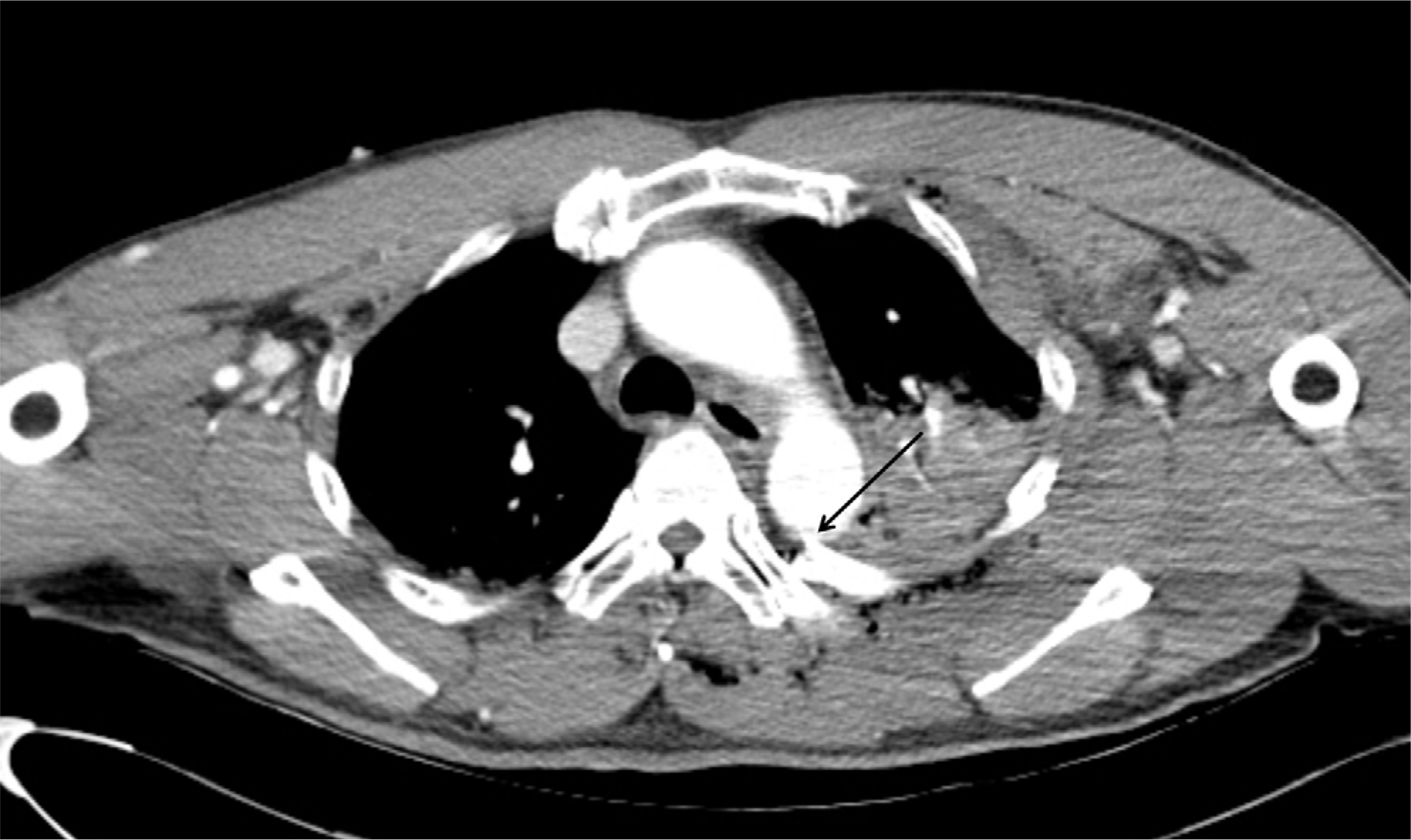Abstract
A traumatic aortic injury due to blunt chest trauma is well recognized. However, a delayed death due to an aortic laceration after blunt chest trauma is very rare. A 49-year-old man arrived at the emergency room after falling from a height of approximately 4 m. Upon radiological examination, multiple fractures to his left ribs with a hemopneumothorax on his left side were found. After undergoing a closed thoracostomy, he was admitted to the general ward due to his vital signs being stable. After 13 hours from his admission, he complained of chest discomfort with the sudden development of massive blood drainage through his chest tube. A cardiopulmonary resuscitation was performed, where the patient then died and an autopsy was performed 36 hours after his death. On internal examination, a small laceration of the descending aorta with irritation of the tunica adventitia was revealed. Given the findings of an additional histological examination and the aforementioned findings, the author thought that the fractured fragments of the posterior ribs had irritated the tunica adventitia of the adjacent descending aorta for some time after the chest trauma and that a perforation had finally occurred. The author here reports a case of a delayed death due to an aortic laceration after a blunt chest trauma with the patient's clinical information and full autopsy findings.
REFERENCES
1.Boyles AD., Taylor BC., Ferrel JR. Posterior rib fractures as a cause of delayed aortic injury: a case series and literature review. Inj Extra. 2013. 44:43–5.

Fig. 1.
An axial computed tomography of the chest demonstrates a displaced fragment of the fourth rib impressing upon the descending aorta (the arrow indicates the tip of the fractured fragment of the rib).

Fig. 2.
(A) A tunica adventitia of the descending aorta is irritated and a small laceration is noted (the arrow indicates the perforation site of the aorta). (B) Fractures of the posterior portion of the left ribs are noted at the same level of the aortic injury (the thin arrow indicates the injury site of the aorta and the thick arrow indicates bone fragments). (C) A histological examination of the aorta reveals aortic injuries (H&E, ×25). Cut surfaces of the aortic laceration were coated with fibrin, tissue from the tunica adventitia, and external elastic lamina. Additionally, a focal hemorrhage in the tunica media and diffuse hemorrhage in the tunica adventitia were noted.





 PDF
PDF ePub
ePub Citation
Citation Print
Print



 XML Download
XML Download